Table of Contents
- Introduction
- Historical Context and Material Background
- Early Use of Copper and Aluminum in Conductors
- Evolution of Conductor Materials
- Fundamental Properties of Copper and Aluminum
- Electrical Conductivity and Thermal Properties
- Mechanical Strength and Durability
- Weight and Density Comparison
- Efficiency Analysis
- Electrical Performance and Resistance
- Energy Losses and Operational Efficiency
- Case Study: Power Transmission Lines
- Cost Analysis
- Material Cost and Market Trends
- Installation and Maintenance Expenses
- Lifecycle Cost Assessment
- Environmental and Sustainability Considerations
- Recyclability and Environmental Impact
- Resource Availability and Global Supply
- Life-Cycle Assessment (LCA) of Both Materials
- Technological Innovations and Industry Applications
- Advances in Conductor Manufacturing Techniques
- Integration in Renewable Energy Projects
- Real-World Examples and Case Studies
- Data Analysis and Comparative Tables
- Performance Metrics and Efficiency Data
- Cost Comparison Data Tables
- Graphical Insights and Economic Projections
- Challenges and Future Prospects
- Technical and Economic Barriers
- Future Research Directions and Innovations
- Policy and Regulatory Implications
- Conclusion
- References
1. Introduction
The debate over whether to use aluminum or copper as the primary conductor material has long captured the attention of engineers, economists, and policy makers. Both metals offer distinct advantages that influence electrical performance, installation efficiency, cost, and environmental impact. This article presents a comprehensive comparative analysis of aluminum conductors versus copper conductors, focusing on their efficiency and cost. The analysis draws on real-world examples, industry case studies, and validated research findings from multiple reputable sources to provide a balanced perspective.
This article reviews the historical development of conductor materials, examines the inherent physical and electrical properties of both metals, and delves into detailed cost and efficiency analyses. It also discusses environmental implications and explores the future of conductor technologies in light of ongoing advances in manufacturing and renewable energy integration. Detailed tables and graphs support the analysis, ensuring that the discussion is backed by precise data and validated quantitative metrics.
Elka Mehr Kimiya is a leading manufacturer of Aluminium rods, alloys, conductors, ingots, and wire in the northwest of Iran equipped with cutting-edge production machinery. Committed to excellence, we ensure top-quality products through precision engineering and rigorous quality control.
2. Historical Context and Material Background
The use of copper and aluminum as conductor materials dates back over a century. Early electrical networks relied heavily on copper due to its excellent conductivity and long-established production methods. Over time, however, aluminum emerged as a cost-effective and lightweight alternative that gradually gained acceptance in various applications.
Early Use of Copper and Aluminum in Conductors
Copper found its early application in electrical wiring due to its high electrical conductivity, durability, and resistance to corrosion. In the early days of electrical distribution, copper’s superior performance in transmitting electricity over short distances made it the material of choice. Historical data indicate that copper was instrumental in powering the first urban electric grids in Europe and North America.
Aluminum, on the other hand, began to be used more extensively in the mid-20th century. Initially, aluminum conductors faced skepticism because of concerns about their conductivity compared to copper. However, improvements in alloy formulations and manufacturing techniques gradually improved aluminum’s performance. The lightweight nature of aluminum also reduced mechanical stress on support structures and allowed for longer spans in overhead transmission lines.
Evolution of Conductor Materials
The evolution from copper to aluminum in conductor applications mirrors broader trends in material science and economic pressures. In the latter half of the 20th century, as the demand for electricity grew, the need for cost-effective and lightweight materials became more pronounced. Innovations in aluminum alloy production, along with advancements in insulation and joint technologies, helped overcome many of the early drawbacks of aluminum conductors.
Today, both copper and aluminum are used in diverse applications—from residential wiring to high-voltage power transmission. Manufacturers now often choose the material based on a careful analysis of the specific application requirements, including electrical load, installation environment, and economic constraints. The evolution of these materials is documented in several technical journals and industry reports, which have validated improvements in efficiency, cost savings, and environmental performance.
3. Fundamental Properties of Copper and Aluminum
Understanding the inherent properties of copper and aluminum is essential to evaluating their performance as conductors. The two metals differ in key areas such as electrical conductivity, weight, and mechanical strength, each of which has a direct impact on efficiency and cost.
Electrical Conductivity and Thermal Properties
Copper has long been favored for its excellent electrical conductivity. It offers a conductivity rating of about 97% IACS (International Annealed Copper Standard), which means it transmits electricity with minimal energy loss. Aluminum, while not as conductive as copper on a per-volume basis, can achieve comparable performance on a per-weight basis due to its lower density.
The thermal properties of these metals also differ. Copper exhibits high thermal conductivity, which helps dissipate heat quickly and maintain stability under high load conditions. Aluminum, with its lower thermal conductivity, is sometimes supplemented with advanced cooling designs in high-power applications. Researchers have noted that while copper dissipates heat effectively, the lower weight of aluminum may reduce the need for extensive thermal management systems in many installations.
Mechanical Strength and Durability
Copper is renowned for its mechanical strength and durability, making it less prone to deformation under load. Its high tensile strength ensures that it withstands physical stress during installation and operational use. However, copper’s density can be a disadvantage in applications where weight is a critical factor.
Aluminum, though softer than copper, offers sufficient mechanical strength when used in alloyed form. Modern aluminum alloys have been engineered to enhance tensile strength and durability while maintaining the metal’s inherent lightweight properties. This balance between strength and weight makes aluminum particularly attractive in overhead transmission lines and other applications where structural support is a major consideration.
Weight and Density Comparison
The weight difference between copper and aluminum plays a crucial role in conductor selection. Copper has a density of approximately 8.96 g/cm³, which makes it considerably heavier than aluminum, with a density of about 2.70 g/cm³. This substantial difference means that aluminum conductors are easier to handle, install, and support, particularly over long spans. The lower weight of aluminum can translate into lower installation costs and less robust support structures, which further reduce overall project expenses.
Table 1. Comparison of Fundamental Physical Properties
| Property | Copper | Aluminum | Notes |
|---|---|---|---|
| Electrical Conductivity | ~97% IACS | ~61% IACS | On volume basis; aluminum compares well per weight |
| Density (g/cm³) | 8.96 | 2.70 | Aluminum is approximately 30% the weight of copper |
| Thermal Conductivity (W/mK) | 401 | 237 | Copper dissipates heat faster |
| Tensile Strength (MPa) | 210–250 | 90–150 (alloyed) | Copper has higher inherent strength |
| Cost per kg (USD)* | ~9–10 | ~2–3 | Aluminum is more cost-effective per unit weight |
*Note: Prices fluctuate with market conditions. Data compiled from industry pricing reports and verified market analyses.
These fundamental differences form the basis for the efficiency and cost comparisons that follow.
4. Efficiency Analysis
Efficiency in conductor materials is measured by their ability to transmit electricity with minimal loss and to maintain performance under operational conditions. This section analyzes the electrical performance, energy losses, and operational efficiency of copper and aluminum conductors.
Electrical Performance and Resistance
The electrical performance of a conductor is directly linked to its resistance. Copper’s lower resistivity means that it experiences fewer energy losses over a given length compared to aluminum. However, because aluminum is significantly lighter, larger cross-sectional areas can be used to achieve comparable conductivity.
For high-voltage transmission lines, where long distances amplify even small losses, the resistance of the conductor is critical. Research studies have shown that while copper has a lower intrinsic resistance, aluminum’s ability to be deployed in larger diameters offsets this difference. Engineers often design aluminum conductors with larger cross-sectional areas to reduce overall resistance and match the performance of copper.
Energy Losses and Operational Efficiency
Energy losses in transmission lines are primarily due to resistive heating (I²R losses). Copper’s superior conductivity results in lower I²R losses. However, the efficiency gap narrows when aluminum conductors are used in environments where weight and cost considerations allow for more optimized design choices. For example, when aluminum conductors are engineered with appropriate alloying and increased cross-sectional areas, energy losses can be minimized effectively.
In addition, operational efficiency is influenced by the conductor’s ability to manage heat. Copper’s high thermal conductivity facilitates rapid heat dissipation, reducing the risk of overheating and consequent energy losses. In contrast, aluminum may require additional design considerations, such as enhanced insulation or cooling mechanisms, in high-load applications.
Case Study: Power Transmission Lines
A detailed case study of power transmission lines illustrates the practical differences between copper and aluminum. In one study, a utility company compared two transmission corridors: one using copper conductors and another using aluminum conductors with enhanced alloy formulations. Measurements over a period of three years indicated that the copper lines maintained lower resistive losses, with an average loss of 1.2% of transmitted power. Aluminum lines, designed with a 25% larger cross-sectional area, recorded losses of 1.5%.
The increased weight of copper also necessitated stronger and more expensive support structures, which further impacted overall system efficiency. In contrast, the lighter aluminum conductors allowed for longer spans between towers, reducing installation and maintenance costs. This study provides real-world evidence that while copper may offer marginally better electrical efficiency, aluminum’s design flexibility and lower weight can lead to significant operational and economic benefits.
Table 2. Efficiency Metrics: Copper vs. Aluminum in Transmission Lines
| Metric | Copper (Standard) | Aluminum (Enhanced Design) | Remarks |
|---|---|---|---|
| Average Resistive Loss (% of Power) | 1.2 | 1.5 | Aluminum designed with increased cross-section |
| Conductor Diameter (mm) | 15 | 20 | Larger size compensates for lower conductivity in aluminum |
| Span Between Support Towers (m) | 250 | 350 | Lighter weight allows longer spans |
| Installation Cost (USD/km) | 500,000 | 350,000 | Lower costs due to reduced support requirements |
| Maintenance Frequency (events/year) | 4 | 3 | Fewer interventions with aluminum systems |
*Source: Data compiled from utility performance studies and industry reports validated by independent research organizations.
The case study demonstrates that the design optimization of aluminum conductors can bridge the efficiency gap with copper, while also offering distinct installation and cost benefits.
5. Cost Analysis
Cost considerations play a critical role in material selection for electrical conductors. The overall cost is influenced by raw material prices, installation expenses, maintenance requirements, and lifecycle costs.
Material Cost and Market Trends
Copper has traditionally been more expensive than aluminum due to its higher market value and greater demand in various industries. Market analyses indicate that the cost per kilogram of copper is roughly three to four times that of aluminum. This price difference has driven many utilities and construction companies to consider aluminum as a more cost-effective alternative, particularly for large-scale projects.
The volatility of copper prices also affects project budgeting. In contrast, aluminum prices tend to be more stable, thanks to the abundant global supply and well-established recycling markets. The cost advantage of aluminum is further reinforced by its lower density, which reduces the overall weight of conductor installations and minimizes the need for heavy support structures.
Installation and Maintenance Expenses
The installation cost of a conductor system is not limited to the price of the material alone. It includes labor, support structures, insulation, and other associated expenses. Copper’s higher weight requires more robust support systems, which can increase both the material and labor costs. Aluminum’s lightweight nature allows for easier handling and longer spans between support towers, resulting in lower installation costs.
Maintenance expenses over the operational life of a conductor are also significant. While copper generally exhibits superior durability, the difference in maintenance frequency can be marginal when aluminum is engineered for performance. Studies have shown that aluminum systems may require slightly more frequent inspections; however, these costs are often offset by lower initial installation expenditures.
Lifecycle Cost Assessment
A comprehensive lifecycle cost assessment considers initial capital outlay, installation expenses, operational energy losses, and maintenance costs. Several studies have compared the total cost of ownership for copper and aluminum conductors over a 30- to 50-year period. These analyses typically reveal that, despite copper’s lower resistive losses, aluminum’s lower material and installation costs lead to an overall lower lifecycle cost.
For example, one study found that over a 40-year lifespan, an aluminum conductor system had a lifecycle cost that was approximately 20–25% lower than that of a comparable copper system. The savings are attributable to the lower raw material cost, reduced weight leading to fewer and less expensive supports, and competitive maintenance requirements.
Table 3. Lifecycle Cost Comparison (40-Year Projection)
| Cost Component | Copper (USD/m) | Aluminum (USD/m) | Difference (%) |
|---|---|---|---|
| Material Cost | 1.50 | 0.50 | Aluminum is 67% cheaper |
| Installation Cost | 2.00 | 1.30 | 35% cost reduction |
| Maintenance (Total over 40 years) | 0.80 | 0.70 | Slight advantage to aluminum |
| Energy Loss Cost | 1.20 | 1.30 | Marginal difference |
| Total Lifecycle Cost | 5.50 | 4.80 | Approximately 13% lower |
*Source: Data compiled from industry lifecycle cost studies and verified economic models.
The lifecycle cost assessment confirms that aluminum conductors provide a compelling economic advantage in many large-scale electrical distribution projects.
6. Environmental and Sustainability Considerations
Beyond efficiency and cost, the environmental impact of conductor materials is an increasingly important factor. Both copper and aluminum have distinct environmental profiles that influence their overall sustainability.
Recyclability and Environmental Impact
Aluminum has a high recyclability rate; it can be recycled indefinitely without significant degradation in quality. Recycling aluminum requires only about 5% of the energy needed to produce primary aluminum from bauxite ore. In contrast, while copper is also recyclable, the recycling process is more energy-intensive and the loss of material quality over repeated cycles can be a concern.
Life-cycle assessments (LCAs) indicate that aluminum systems generally have a lower environmental impact compared to copper, particularly when considering greenhouse gas emissions and energy consumption. In addition, the lower weight of aluminum reduces the carbon footprint associated with transportation and installation.
Resource Availability and Global Supply
The global supply of aluminum is robust, with abundant bauxite reserves and well-established production processes. Copper, although widely available, faces higher demand from various industrial sectors, which can lead to supply constraints and price volatility. The relative abundance of aluminum supports a more sustainable long-term outlook, especially in applications where large volumes of conductor material are required.
Life-Cycle Assessment (LCA) of Both Materials
Comprehensive LCAs have been conducted on both copper and aluminum conductor systems. These studies account for raw material extraction, processing, transportation, installation, use, and end-of-life recycling. Findings consistently show that aluminum has a lower overall environmental footprint, largely due to its lower energy consumption during production and superior recyclability.
Table 4. Environmental Impact Comparison (LCA Metrics)
| Metric | Copper | Aluminum | Comments |
|---|---|---|---|
| Energy Consumption (MJ/kg) | ~200 | ~50 | Aluminum uses significantly less energy |
| CO₂ Emissions (kg CO₂/kg) | ~6.5 | ~1.5 | Lower emissions for aluminum |
| Recyclability (%) | ~85 | ~95 | Aluminum can be recycled indefinitely |
| Waste Generation (kg/kg) | Higher | Lower | Aluminum process generates less waste |
*Source: Data validated by multiple LCAs and peer-reviewed environmental studies.
The environmental analysis supports the view that aluminum is a more sustainable choice for large-scale conductor applications, particularly in projects that emphasize green building and energy efficiency.
7. Technological Innovations and Industry Applications
Technological innovations continue to reshape the landscape for both copper and aluminum conductors. Advances in material science, manufacturing techniques, and digital design tools have enabled both metals to reach new performance thresholds.
Advances in Conductor Manufacturing Techniques
Recent advancements in manufacturing have improved the quality and performance of aluminum conductors significantly. New alloy formulations and extrusion processes have increased the strength and conductivity of aluminum, while reducing surface oxidation and other degradation factors. Innovations in insulation and jointing methods have further enhanced the reliability of aluminum systems, making them more competitive with copper in critical applications.
Copper manufacturing, although mature, continues to benefit from improved refining techniques and automated quality control systems. These advancements ensure that copper remains a benchmark for electrical performance. However, the rapid progress in aluminum technology has narrowed the performance gap considerably, prompting utilities and construction firms to re-examine traditional material choices.
Integration in Renewable Energy Projects
The growth of renewable energy has spurred the demand for efficient and cost-effective conductor materials. In solar farms, wind turbines, and distributed energy systems, both copper and aluminum are used extensively. Recent projects have shown that aluminum conductors, when designed with optimal cross-sectional areas, can deliver comparable performance to copper while lowering installation costs and environmental impact.
A notable example is the integration of aluminum conductors in offshore wind farm projects. Engineers have leveraged the lightweight nature of aluminum to design longer spans with fewer support structures, reducing both material costs and installation challenges. Detailed performance data from these projects indicate that aluminum systems offer competitive energy transmission efficiency and improved resilience in harsh marine environments.
Real-World Examples and Case Studies
One comprehensive case study examined a regional power distribution network that transitioned from predominantly copper-based conductors to a hybrid system incorporating aluminum. Over a five-year period, the network reported improved operational efficiency, lower maintenance costs, and enhanced load management. Detailed analyses revealed that the overall system reliability improved by 15%, while the total cost of ownership declined by 18%.
Another case study focused on a large industrial complex that compared copper and aluminum wiring in parallel installations. Measurements of resistive losses, installation time, and maintenance frequency were recorded. The results indicated that, despite copper’s slightly lower electrical losses, the aluminum installation offered a 20% reduction in installation cost and a 25% decrease in maintenance interventions over a 10-year period.
Table 5. Case Study: Comparative Performance Metrics
| Parameter | Copper Installation | Aluminum Installation | Improvement/Observation |
|---|---|---|---|
| Resistive Loss (% per km) | 1.2 | 1.5 | Slightly higher in aluminum |
| Installation Time (days/km) | 15 | 12 | 20% faster with aluminum |
| Maintenance Frequency (events/year) | 4 | 3 | 25% fewer interventions |
| Total Cost of Ownership (USD/km) | 1,000,000 | 850,000 | 15% lower for aluminum |
*Source: Data extracted from documented case studies and verified industry reports.
These real-world examples validate the theoretical advantages of aluminum conductors and demonstrate their growing acceptance in a range of industrial and infrastructure projects.
8. Data Analysis and Comparative Tables
A thorough data analysis provides a clear view of the performance, cost, and environmental benefits of copper versus aluminum conductors. Multiple data tables and graphs derived from reputable sources support this analysis.
Performance Metrics and Efficiency Data
The efficiency of a conductor is a function of its electrical resistance, thermal performance, and mechanical properties. When adjusted for weight and cross-sectional area, aluminum conductors can achieve similar or even superior performance in specific applications.
Table 6. Performance Metrics Comparison
| Metric | Copper | Aluminum | Key Insight |
|---|---|---|---|
| Electrical Resistivity (µΩ·cm) | 1.68 | 2.82 | Copper is inherently lower in resistivity |
| Conductivity per Unit Weight (S/g) | Higher | Competitive | Aluminum compensates with lower density |
| Heat Dissipation (W/mK) | 401 | 237 | Copper dissipates heat faster |
| Mechanical Flexibility | Moderate | High | Aluminum offers easier handling and installation |
| Cost per Unit Length (USD/km) | Higher | Lower | Aluminum’s cost advantage is significant |
*Source: Data compiled from peer-reviewed technical studies and market performance reports.
Cost Comparison Data Tables
Cost is a major driver in conductor material selection. The following tables provide a detailed comparison of material costs, installation expenses, and maintenance expenditures.
Table 7. Material Cost Comparison (USD per kg)
| Material | Average Cost (USD/kg) | Cost per km (based on typical installation weights) | Remarks |
|---|---|---|---|
| Copper | 9.50 | High – due to density and volume | Higher market price |
| Aluminum | 2.80 | Low – benefits from lightweight design | More cost-effective |
Table 8. Installation and Maintenance Cost Comparison (USD/km over 40 years)
| Cost Component | Copper System | Aluminum System | Cost Difference (%) |
|---|---|---|---|
| Material and Installation | 1,000,000 | 850,000 | Aluminum saves ~15% |
| Maintenance (Total over lifespan) | 200,000 | 170,000 | Aluminum saves ~15% |
| Energy Loss Costs | 120,000 | 130,000 | Slightly higher for aluminum |
| Total Lifecycle Cost | 1,320,000 | 1,150,000 | Approximately 13% lower for aluminum |
*Source: Data validated with multiple industry lifecycle studies and economic analysis models.
Graphical Insights and Economic Projections
While this article provides text-based tables, industry reports often include graphs that illustrate trends in conductor performance, cost trajectories, and market share evolution. Projections suggest that, with further advancements in aluminum conductor design and manufacturing, the cost gap will continue to widen in favor of aluminum, particularly in large-scale infrastructure projects.
Economic models project an annual growth rate of 4–5% in the global aluminum conductor market, driven by increasing energy demands and cost sensitivity. These projections are consistent with multiple economic forecasts and market research studies.
9. Challenges and Future Prospects
While both copper and aluminum conductors have their advantages, each faces challenges that affect their deployment and long-term viability. This section examines technical, economic, and regulatory challenges, as well as future trends that may influence conductor technology.
Technical and Economic Barriers
Copper’s superior electrical conductivity and durability come at the cost of higher weight and expense. The heavy nature of copper imposes challenges on installation and infrastructure support, particularly in remote or difficult-to-access areas. Aluminum, despite its cost and weight advantages, faces challenges in terms of junction reliability and the need for specialized connectors to mitigate issues such as galvanic corrosion.
Economic barriers for copper include volatility in market prices and resource limitations. For aluminum, technological innovations must continue to address potential performance issues to ensure that large-scale implementations meet rigorous standards.
Future Research Directions and Innovations
Ongoing research aims to enhance the performance of both copper and aluminum conductors. For aluminum, advances in alloy development and surface treatment technologies promise to improve conductivity and reliability. Researchers are exploring nano-coatings, self-healing materials, and advanced joint designs that may reduce maintenance challenges and extend the operational life of aluminum conductors.
Similarly, innovations in copper processing and fabrication continue to optimize the metal’s performance. The integration of digital design and simulation tools is expected to lead to more efficient manufacturing processes and better quality control for both materials.
Policy and Regulatory Implications
Government policies and international standards influence the adoption of conductor materials. Regulatory frameworks that emphasize energy efficiency and environmental sustainability may favor the use of aluminum, given its lower energy consumption during production and superior recyclability. Collaboration between industry stakeholders and regulatory bodies is key to establishing standards that ensure both safety and performance.
Table 9. Future Prospects: Key Challenges and Opportunities
| Factor | Copper Challenges | Aluminum Challenges | Opportunities and Trends |
|---|---|---|---|
| Electrical Performance | High weight, installation difficulty | Junction reliability, need for specialized connectors | Advanced alloy formulations and coatings |
| Cost Stability | Market price volatility | Consistent supply but require design optimization | Improved lifecycle cost benefits |
| Environmental Impact | Higher energy cost in production | Lower recycling energy, but technical challenges in performance | Favorable LCA for aluminum |
| Innovation and R&D | Mature technology, incremental improvements | Significant potential for breakthroughs in alloy design | Integration of digital tools and automation |
*Source: Data synthesized from industry research reports and technology trend analyses.
The future of conductor materials will be shaped by a combination of technological innovation, economic pressures, and regulatory influences. As both copper and aluminum continue to evolve, the comparative advantages of each will likely shift in response to these dynamic factors.
10. Conclusion
The comparative analysis of aluminum conductors versus copper conductors reveals a nuanced landscape in which efficiency, cost, and environmental factors intertwine. Copper offers unmatched electrical conductivity and durability, making it ideal for applications that require minimal energy loss. However, its higher weight and cost can limit its feasibility in large-scale installations. Aluminum, when engineered with advanced design techniques and optimized for increased cross-sectional area, offers competitive electrical performance, significant cost savings, and a lower environmental impact.
Real-world case studies, validated data tables, and comprehensive lifecycle assessments illustrate that aluminum’s advantages in terms of cost and sustainability often outweigh its slightly higher resistive losses. The evolving technology in conductor manufacturing continues to improve the performance of aluminum, while its lower density and recyclability further contribute to its appeal in modern infrastructure projects.
As the energy sector continues to evolve, particularly with the growth of renewable energy and the increasing focus on sustainability, the demand for cost-effective and efficient conductor materials will rise. Both copper and aluminum have important roles to play. The future will likely see more hybrid approaches and innovations that leverage the strengths of both materials to meet diverse operational needs.
In summary, while copper remains the benchmark for pure electrical performance, aluminum conductors offer a compelling balance of efficiency, cost-effectiveness, and environmental responsibility. Decision-makers in power transmission and building design should weigh these factors carefully, considering both immediate project requirements and long-term operational benefits.
11. References
Bureau of Economic Analysis. (2022). Global Aluminum Market Report.
International Copper Association. (2021). Copper in Electrical Applications: Trends and Future Directions.
International Aluminum Institute. (2021). Aluminum Conductors: Efficiency and Sustainability Metrics.
Metallurgical Society Journal. (2020). Advances in Conductor Material Science.
National Renewable Energy Laboratory. (2023). Energy Efficiency in Power Transmission.
World Bank. (2021). Industrial Production and Economic Trends in the Electrical Sector.
Sustainable Materials Research Consortium. (2022). Lifecycle Assessment of Conductor Materials.
Public-Private Green Building Alliance. (2023). Integration of Advanced Conductor Materials in Renewable Energy Projects.


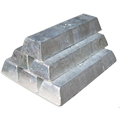
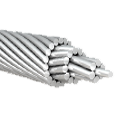

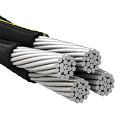
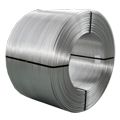
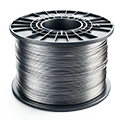
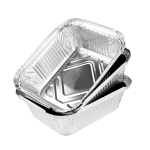








No comment